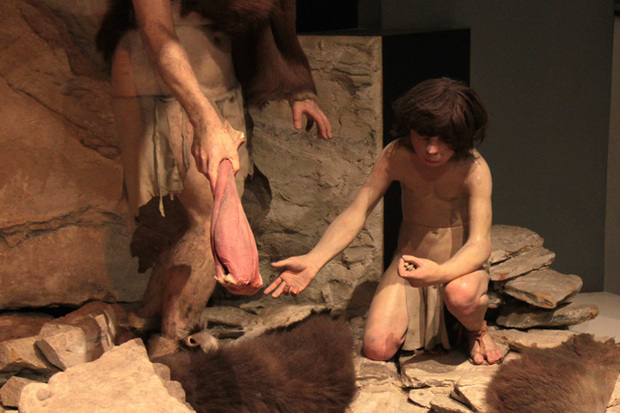
A massive volcanic eruption about 40,000 years ago probably wasn't big enough to wipe out the Neanderthals as previous research suggested, new research finds.
Although the eruption, which occurred in what is now Italy, blanketed nearby areas in lava and ash, it wouldn't have lowered temperatures enough throughout Europe to be a significant cause of the Neanderthals' demise, said study co-author Benjamin Black, a geologist at the University of California at Berkeley.
Exactly why the Neanderthals disappeared is a mystery. "Neanderthal decline started well before the eruption, so if there were just a few scattered populations that were hanging on at the brink, it's hard to say what might have pushed them over the edge," Black told Live Science.
Long, slow decline
Neanderthals and modern humans diverged from a common ancestor about 500,000 years ago, and at its peak, the Neanderthal population numbered about 70,000. But the population slowly dwindled and Homo neanderthaliswent extinct between 35,000 and 41,000 years ago. Some scientists have proposed that humans killed off the rival hominins, while others say Neanderthals interbred with modern humans until the group was completely absorbed. [Top 10 Mysteries of the First Humans]
Another controversial theory has proposed that the Campanian Ignimbrite super-eruption about 40,000 years ago, near modern-day Naples, dramatically cooled the climate.
To test that theory, Black and his colleagues used existing data on rocks from the eruption and combined those with climate models. Their new model predicted how sulfur — which absorbs and scatters sunlight and can therefore cool the climate — was carried through the atmosphere over Europe after the eruption.
Sign up for the Live Science daily newsletter now
Get the world’s most fascinating discoveries delivered straight to your inbox.
The team found that the climate would have cooled at most about 9 to 18 degrees Fahrenheit (5 to 10 degrees Celsius). This certainly would have been a cold snap, but such a temperature swing was still within range of what the Neanderthals would have routinely experienced.
What's more, Neanderthals were already extinct in Italy at that time, and the temperature change in other parts of Europe would have been even more modest, Black said.
The data suggests the eruption wasn't a major factor in the Neanderthals' extinction, Black said.
Case closed?
"I agree with the opinion that it would not have been cold enough after the Campanian Ignimbrite eruption to affect life seriously," Stephen Self, a volcanologist at the U.S.-Nuclear Regulatory Commission, who was not involved in the study, told Live Science an email.
But not everyone thinks the case is closed.
"It always strikes me as odd that scientists still keep looking for the one parameter/smoking gun to explain the story, when reality tells us that the impact of natural events is a combination of a series of complex events, and when the combination is unfavorable the effects can be big," Thorvaldur Thordarson, a volcanologist at the University of Iceland, told Live Science in an email.
For instance, the huge amounts of sulfur released in the eruption could also have altered air circulation patterns, meaning the climate models that are based on current circulation patterns might not tell the whole story of what happened during the eruption, said Thordarson, who was not involved in the new study.
Aside from providing insight into the demise of the Neanderthals, the new study could also shed light on our species' ability to adapt to changes in climate, Black said.
"It's kind of cool to think about this study as a way of understanding how resilient human beings are when their environment changes very suddenly, which is something that's happening right now," Black said. "The difference is that 40,000 years ago, anatomically modern humans did not have some of the luxuries that we have today."
The findings were presented Dec. 18 at the annual meeting of the American Geophysical Union in San Francisco.
Follow Tia Ghose on Twitter and Google+. Follow LiveScience @livescience, Facebook & Google+. Originally published on Live Science.

Tia is the managing editor and was previously a senior writer for Live Science. Her work has appeared in Scientific American, Wired.com and other outlets. She holds a master's degree in bioengineering from the University of Washington, a graduate certificate in science writing from UC Santa Cruz and a bachelor's degree in mechanical engineering from the University of Texas at Austin. Tia was part of a team at the Milwaukee Journal Sentinel that published the Empty Cradles series on preterm births, which won multiple awards, including the 2012 Casey Medal for Meritorious Journalism.










